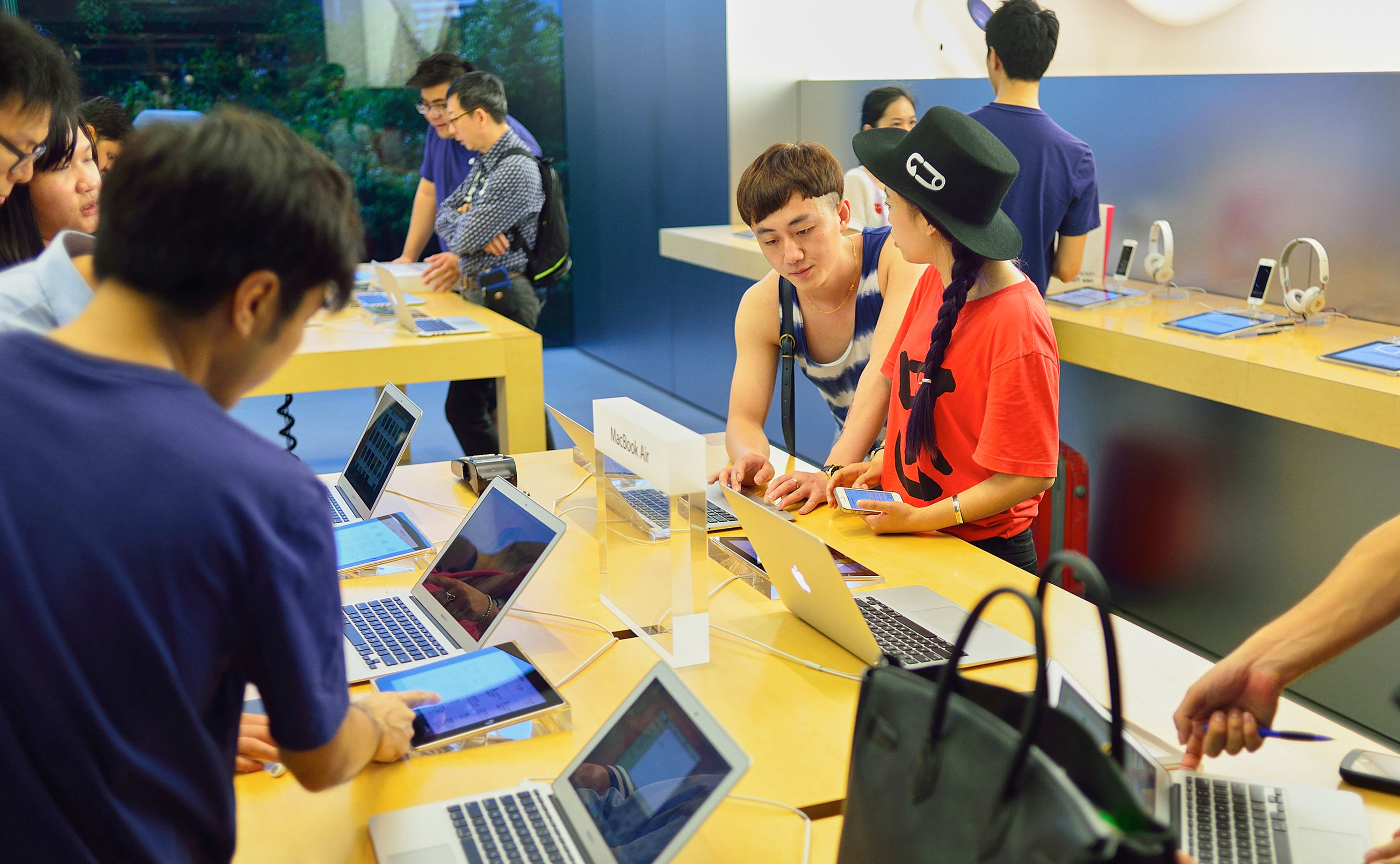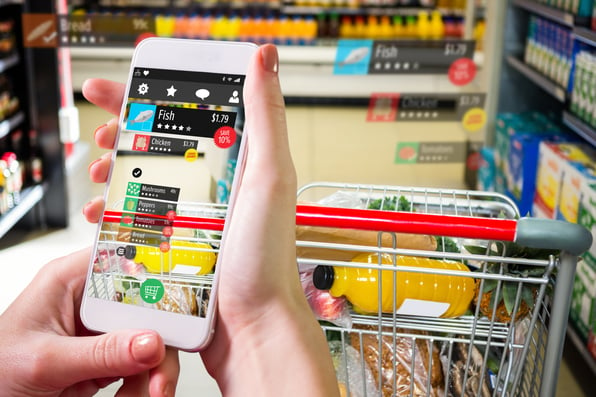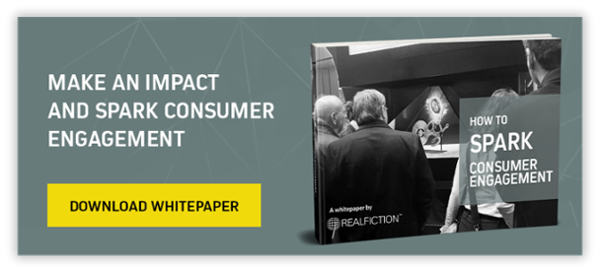Retail
Can Creative Product Marketing Rescue the In-store Experience?
Lorem Ipsum is simply dummy text of the printing and typesetting industry. Lorem Ipsum has been the industry's standard dummy text ever since the 1500s,
Lorem Ipsum is simply dummy text of the printing and typesetting industry. Lorem Ipsum has been the industry's standard dummy text ever since the 1500s
Middle
Right
10 %
REVENUE INCREASE
10 %
REVENUE INCREASE
In a fast paced digital age, retailers are going to have to think outside the box to keep their customers satisfied and stimulated.
We’re making contactless payments using our phones, shops have started offering same day delivery and restaurant bills can now be split using apps. In a frighteningly impatient technological world, the in-store experience is being put under strain by the demands of today’s consumers. Throughout this article we’re going to explore some of the major threats facing retail brands and highlight how creative product marketing can provide a light at the end of the tunnel.
“Offering more choice may no longer be what’s important about the shopping experience,” - Guy Smith, Head of Design at Arcadia Group
So what’s endangering retailers?
How long have you got?
One of the biggest problems facing retailers today is the physicality of the entire in-store experience. Not only are customers required to get to and from the shop, but they then face the issue of a limited amount of stock.
In a global online shopping survey it was found that only 43% of retailers offer the option to order out of stock items on your mobile phone.
Therefore it’s little surprise that shoppers are opting to fill up their baskets from the comfort of their own home as they peruse a seemingly infinite selection of available products.
Which leads us on to our next major threat for retailers.
People are falling out of love with the shopping experience itself.
Shoppers today are using their homes as changing rooms and ordering more than they need, in multiple sizes, in the knowledge that they can simply send back what they don’t want.
The sheer volume of products available is draining a lot of the fun out of the retail experience, meaning that customers are becoming disconnected with brands as buying online starts to bare a dull chore like resemblance to a weekly food shop.
So if infinite choice isn’t really what shoppers are longing for. What do they want?
It seems as though they are seeking a far more emotional fulfilment from the purchasing process. They want to be sold.
They want to be won over by unique and creative product marketing, they want that feeling of guilty indulgence after they leave the store. That excitement doesn’t exist in the same way online because shoppers feel more in control.

Shoppers are far more susceptible to impulse and desire when inside a store than when on a website. Therefore retailers need to start taking advantage of the physicality of their stores.
Just take Apple for example, about 80% of their store is a playground made up of their products. The shelves with purchasable items on are barely noticeable. This is why they’re are always so busy.
So while it’s clear that retailers still have a lot to offer, the underlying issue seems to be that customers expectations and stimulation thresholds are growing at a faster rate than most in-store technological advances.
The light at the end of the tunnel
If the world of online shopping is desensitising buyers then the in-store experience needs to be going in the opposite direction by making a visit to their store as personal as possible.
By utilising creative product marketing, retailers have the opportunity to provide consumers with stimulating experiences that show off both their products and their brand. Here are some future trends that have the potential to turn the retail experience on its head.
Beacons
One in-store feature that’s sure to become commonplace in stores is the use of beacons. Beacons are wireless transponders that facilitate communication between smart devices connected to a common Bluetooth low energy network.
These beacons will allow retailers to gather data from their customers and tailor make promotions and advertisements to them in real time. In a recent global shoppers survey it was found that 47% of shoppers would love to receive real time promotions, however at the moment only 7% of retailers can actually fulfil that wish.
They will also be able to provide data on what part of the store customers spent the most time in, what they looked at and how long they stayed for. Where you would have Google analytics for your website, you would have beacons for your store.

Smart Mirrors
Some stores have already begun testing out smart mirrors, allowing customers to try on virtual clothes in different sizes and colours. Is this simply helpful for trying to find the right fit? Of course not, the users overriding takeaway will be a positive retail experience with cutting edge technology that they will then associate with the brand.
These smart mirrors also tap into social media platforms, offering users the chance to snap and share pictures of them trying on the clothes to Facebook to ask friends for their opinion.
The mirror will even suggest other items of clothing to go with what you’re trying on, doubling up as a personal shopping assistant.

3D Holographic Displays
One form of in-store technology that has started turning the heads of consumers is 3D holographic displays.
Not only do they provide a cool visual experience for customers, but more importantly they tap into the psychology of buying by enabling on-site engagement to create positive brand experiences. Rather than relying on online product marketing, 3D holographic displays convert sales by triggering the some of the basic human senses and thereby engaging customers whilst they’re in-store and in a buying state.
It’s exciting to be amongst this forward thinking technology and to let your mind run away with thoughts of what the next invention could be.
The Future
The key theme linking all of these future trends is that they provide positive and personal user experiences.
It’s no coincidence that 91% of retailers in a recent Forbes study claimed they plan on making significant investment into in-store technologies over the next 2 years.
The sooner that retailers can start to adapt to these technologies and creative product marketing trends, the sooner they will be able to differentiate themselves within the marketplace.
So to answer our original question of ‘can creative product marketing rescue the in-store experience?’ Yes it certainly can.
Once retailers start to embrace technology and begin using their stores as stimulating playground style showrooms, customers will fall back in love with the in-store retail experience all over again.
Dont miss the next post coming soon on the psychology of selling - subscribe here
